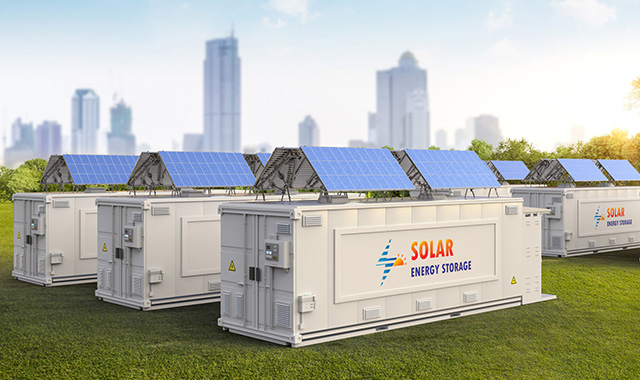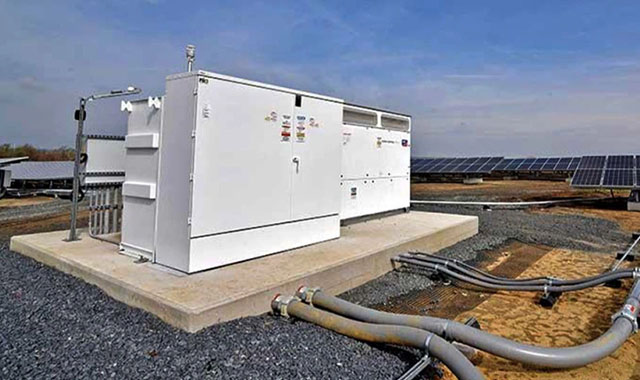Performance Evaluation of PV-ESS-Integrated Grid Using ANN Tuned UPQC for Power Quality Enhancement
Ashish Oliya: Associate Electrical Engineer
Abstract:
This study investigates the application of an Artificial Neural Network (ANN)-based control strategy for Unified Power Quality Conditioner (UPQC) in a grid-connected Photovoltaic (PV) and Energy Storage System (ESS) setup. The research aims to improve power quality parameters under nonlinear loads, grid disturbances and faults (L-G and L-L-L-G). The system architecture employs Neutral Point Clamped (NPC) converters as series voltage conditioner that mitigates voltage magnitude sagging, swelling, and im-balance and the shunt current conditioner which mitigates harmonic distortion, load imbalance, and reactive power. FUZZY logic MPPT for optimal solar extraction, and a FUZZY-based ESS controller. Simulation results confirm that ANN-tuned UPQC significantly enhances power quality by reducing THD and improving the system's power factor.
Introduction:
Renewable energy sources, including photovoltaic (PV) systems, and battery storage, are becoming more common in the power grid. This can create opportunities and challenges for power quality. For instance, this research considers power quality issues, with the main metrics such as active power, reactive power, total harmonic distortion (THD), power factor, and stability on the distribution grid. The PV system and battery storage are connected through the point of common coupling (PCC) to the grid, and this system serves both resistive and non-linear loads. This paper presents a smart approach using ANN-tuned UPQC to enhance the reliability and quality of power in distribution networks incorporating renewable sources.

Impact and Problem Statement:
As the penetration of renewable energy grows, power quality challenges such as voltage sags/swells, harmonic distortion, and instability due to variable energy generation have become prominent. New modern, sensitive loads are more susceptible to these issues, resulting in overheating in electrical equipment and inefficient power transfer. Further to this, imbalances in voltage and reactive power result in an inherent instability on the grid, leading to higher losses, inefficient operation in electrical loads, as well as penalties for non-compliance with grid standards. Voltage sags and dips are the extreme case as industries mostly are reliant on fragile electronics, while harmonics and flicker decrease the life of electrical components. The existing mitigation devices like Conventional controllers (PI) that can be used to address these situations have demonstrated limitations on their effectiveness in more complicated scenarios, mostly due to dynamic grids with high levels of renewable and ESS penetration and often struggle to adapt to the system's dynamic nature.
ANN Tuned UPQC Topology:
The UPQC is considered to be the most advanced power quality improvement device, incorporating advantages of both a Series Active Power Filter (APF) and Shunt Active Power Filter (APF) into a single combined unit. The UPQC integrates into itself the traditional devices, the DSTATCOM and the DVR. It therefore provides a holistic solution for this power quality for enhancing the voltage profile and the current profile and thereby improving the overall reliability of power.
- Shunt Inverter: Compensates current harmonics using dq0 transformation and hysteresis control.
- Series Inverter: Regulates voltage sags/swells using SRF theory and SPWM control.
- ANN Controller: Adjusts UPQC operation in real-time, improving dynamic performance compared to traditional PI controllers.
Results and Discussion:
The simulation results show that the FUZZY-based MPPT efficiently tracked the MPPT of the PV system with approximately 96% accuracy, achieving a stable output of about 57.5 kW from rated 60kW system with minimal oscillations. The ESS responded dynamically to load demands, charging during normal conditions & active PV period and discharging during peaks & off PV duration, thus ensuring a smooth and stable power supply. Additionally, during L-G and L-L-L-G faults, the ANN-UPQC maintained voltage stability and significantly limited current spikes to around 500A, compared to over 2200A without UPQC. The use of a PI-controlled UPQC significantly improved power quality, while the ANN-tuned UPQC provided even better performance, both maintains harmonics well below the IEEE-519 standard., further reducing distortions and enhancing power factor close to unity. A THD Table below shows different cases seen at 0.5s through five cycles and up to 20th harmonics (1000Hz) are as follows:
Table: Grid THD Analysis Under Different Conditions

Conclusion & Recommendations:
The ANN-tuned UPQC integrated with PV-ESS significantly improves power quality by minimizing THD, regulating voltage, and correcting power factor. It outperforms conventional PI controllers and demonstrates robust fault-tolerant behavior. The fuzzy MPPT controller extracts power efficiently from the PV system, converging to the maximum power point quickly with great stability and efficiency. Furthermore, the ESS satisfactorily maintains a balanced power transfer with load and grid support, with controlled discharge.
It is recommended that ANN-based UPQC systems be considered for deployment in smart grids with high renewable penetration due to their superior adaptability and controllability. Further, real-time hardware implementation should be explored to validate simulation results and ensure practical feasibility. Future work can also investigate hybrid ANN-FUZZY control strategies to achieve enhanced dynamic performance under diverse operating conditions.


